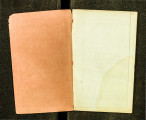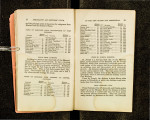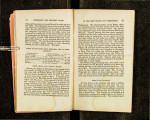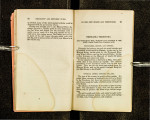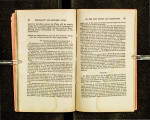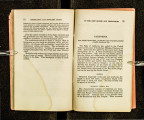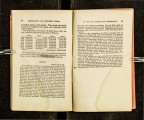| OCR Text |
Show .. 80 IMMIGRANTS' AND SETTLERS' GUIDE ~1nu rCoapleif,o rhnaisa .b een carried to a h.I gh degree of perfection The number of gra · . . . 10,592,688, of whichp~:I:e.A m Cahforma in 1861 was Sonoma I, 701,661. All Euro ngeles h_ad_ 2,570,000, and as also those of the .Atl f psan varieties of the grape ~tate. This fact is si nifin I~ tates, grow well in thi~ twn _of _its climate a!d s~i~~o ~' the wonderful adaptaa~ d mdiCates that California .e cu!ture of the grape, ~me country of the world M Will _beco~e the greatest Its superiority, says: . • r. Bittel, m summing up '' California vineyards rod . . yards of any other grape ~istr~: ?[dinarlly twice as much as the vine crop never fails. as it does . ' I general report be true Th • other country · . m every other country v·· · e grape stake but stan~eqmlre more labor, for here the vin . meyards. in every ' s a one.'' e 18 not tramed to a THE GRAPE REGION. ~he grape region ext.A d fi fai distance of 595 mi.I e.s.,. -nn osr thr om· t hhe southern boun d ary rom east to west of about 100 mwil ~te s.a n average breadth SOIL AND CLIMATE T? set forth more full the . . ~rfia,. as well as to plac~ b f( speciala;dvantages of Cali-t antic States the causes o~ ore th~ ':me-grower in the dwell m_ore at length on th t~em, It If:> of importance to as ~-ey mfluence the growt~s~tttnd chmate of California ~rst, as to the kind of .I b e grape. grape cult M 801 est ada t a of Calif( u;e,, r. Bittel, in his wo k P e to successful likes orma, already alluded t r on the" Resources thrive: i:a:~[ 1or gravelly. (not ;:~i:t)Y:: .1 "Tdhe vine ' oamy, or stiff clay s il '' OI ' an never " The soil of the . 0 • and adds : light, warm sand. v~neyard~ at Los Angeles an . . were too poor to o the mexperienced e ~ .A.nahmm IS a deep and Napa valleysp~~duc~ any valuable veget~~ It looks as though if near the foot of th e vmeJ:ards are planted . e growth. In Sonoma e mountams7 or in a light, saInn da red, gravelly clay y lo am m· the centre' • TO THE NEW STATES AND TERRITORIES. 81 of. the va?-e,r. . Of late the vine-growers of these valleys have done Without 1rngat10n. In Santa Clara valley most of the vines have been placed in a rich, black loam, but their vineyards are unhealthy. The :::)acramento vines are planted in sandy loam· those of the Sierra Nevada in sandy loam or in gravelly clay." ' Second, flR to climate. If a warm, light, porous soil is necessary to the perfection of the grape, a dry climate is none the less essential. It is much to be regretted that the influence of climate in its altitude, heats, and rains on grape-growing, has not received that systematic consideration which is partly due to its great importance. The Western States have often, during the summer monthR, a moist, sultry atmosphere, during which the grape suffers severely from rot. The general elevation of these States is from 500 to 700 feet above the sea level. Whether a greater elevation, say from 1000 to 2000 feet, would not be beyond the reach of the rot, is a question yet to be determined. In a dry climate, like that of California, the altitude is immaterial, for the atmosphere, even in the lowest localities, is sufficiently dry to secure the grape against rot. If, however, these localities have a rich and moist soil, the vines, as already stated, are seldom healthy. Says Mr. Hittel: '' This disease,* which has done such great damage in France, appeared in 1859, but has done no injury as yet, save in a few small, young vineyards. I have heard of it only in Santa Clara, Sonoma, and Alameda counties, where the vines are planted in a wet black loam or stiff clay., - The meteorological tables exhibit an average fall of rain during summer in California of 0.3 of an inch ; in the European vine-growing countries of 7. 7, and in the Atlantic States of nearly 13 inches. The climate would undoubtedly be more favorable, if more rain fell in summer, but in moist situations, where irrigation may be employed, it presents all that invites the grape production. * Rot, resembling a combination of what are ordinarily known as blight and mildew. 4* |



